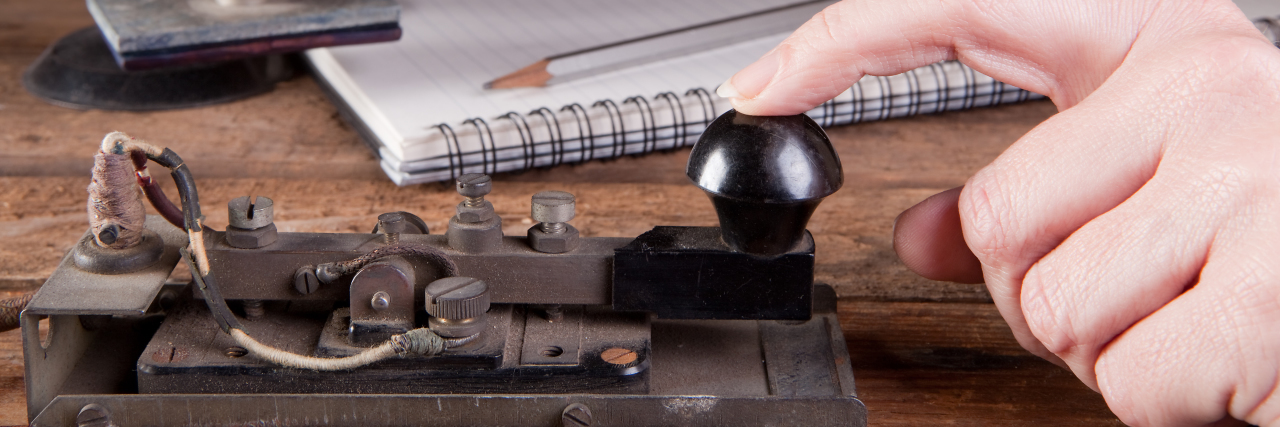My personal lifelong struggle with major depression and autism spectrum disorder are typical of my peers in the veterinary field. However, I am fortunate to be able to divert several of these mental irritants away from my psyche because of this unique, little known activity:
Sixty-two years ago, medical professionals were not commonly diagnosing autism. During my childhood, I knew I was different from my peers but I did not know why. My parents, teachers and peers wondered why I rarely spoke and would seldom look at them while talking. My mother occasionally scolded me, “Duane, you have to look at people!” I tried, but it was difficult for me. My parents gave me an IQ test because they were concerned that I might have an intellectual disability.
I was socially anxious; my first day of kindergarten was spent hiding in the tall grass of a nearby ditch. I had to escape; I ran down the school sidewalk during the first recess period and finally felt the safety of my desperate hideout.
I grew up on a farm and despite my discomfort and distress of trying to cope in society, I felt comfortable in the farm animal environment. I am fortunate to have dedicated 35 years of my life to working as a veterinarian. Of course, I still had to engage with society — but my love for and comfort with the patients I saw helped me cope. I have never felt comfortable in the interpersonal world.
When I was 13, I was exhibiting one of my 4-H lambs at our local county fair. I heard strange sounds originating under the grandstand. Investigation revealed the wonderful, relaxing sounds of Morse Code originating from an amateur radio station exhibit. I believe this activity fascinates me because it has aspects of musical tonality, patterning and jigsaw puzzle similarities. People with ASD may be attracted to this.
Sending Morse Code can be effortless. One of the Morse instruments I choose daily sends Morse electronically. The physical effort is gone — squeezing one vertical paddle sends a string of dots as long as it is pressed. The other vertical paddle sends an electronic string of dashes as long as it is pressed. The speed is user adjustable.
I enjoy the daily routine of using ear buds to send Morse privately to myself at 35 words per minute while I watch television with my family. If I am stressed, I try to spend time on the Morse paddles to calm down. This activity was needed recently during a family trip to Disneyland. The crowded environment overwhelmed me. A Disneyland Starbucks on campus saved me — I used my backpack-stored Morse equipment.
Morse communication combines the fun and challenges of video game use with the utility of cell phone texting to talk to people. Morse is free from the violence, sexual images and grooming behavior that can be prevalent in online gaming groups. Morse communication is a wholesome, relatively safe activity — American users are vetted by FCC staff and licensees are given custom callsigns. True identities are known in this public forum. Profane language is not allowed in this regulated environment. There are lots of people chatting with each other in Morse Code worldwide over the shortwave radio frequencies. However, most current Morse users are older people.
Morse communication was vitally important historically and it would be disturbing to see it evolve into an historical relic — no longer seen, heard and used. That’s why I started developing a youth outreach for Morse Code exposure many years ago. I now have a fun, attractive and informative display that I exhibit at local events. This is my driving passion nowadays — to expose youth to the wonderful world of Morse Code communication. This unique activity could partially destroy the damaging societal paradigms commonly seen today in online savvy youth, such as bullying, anxiety about appearance and popularity.
Several years ago, a teenage young man approached my outreach at a local event. The Morse sounds he heard intrigued him. He came to my exhibit five times that day to practice sending Morse with each of the three unique Morse instruments. He had finally found a stutter-free method of communicating that was fun, challenging and unknown to his peers.
An autistic teenage young woman and her mother traveled from the Los Angeles area up to Sacramento to pick up my donated Morse equipment. She had explained to her mother that “listening to Morse relaxes me.”
Another young man at my Morse radio station set up at a teen center, shunned by his peers there was upset to have to leave my station when his mother arrived to drive him home.
I have been working to find influential people wanting to help my effort. This road to success has been rocky, with some organizations rejecting my presentation. However, I am eternally grateful for the wisdom, kindness and insight shown by Dr. Pamela Wolfberg at San Francisco State University and by Ms. Margaret Kugler on staff at the Northern California Shriner’s Hospital for Children here in Sacramento. Professor Wolfberg kindly invited me to present my outreach to her students, and Margaret invited me to speak to her school student-patients at the hospital. All four events over multiple years were well received. I am constantly looking for opportunities to present my Morse outreach at professional meeting and events.
Morse is my preferred method of communication. I wish it was possible to talk to everyone in Morse Code. I hope you will consider investigating this activity; I truly believe it has saved my life.
For more information, you can visit the CW Operators Club and National Association for Amateur Radio.
Getty image by Studio Annika.

